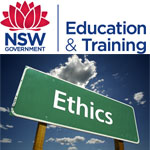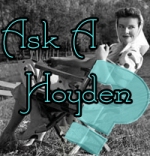If anyone who reach ABC iView (location locked to Australian residents) wants to catch up, and it’s accessible to you, Life at 1 and Life at 3 are currently available, as is part one of Life at 5. Presumably the second part will go up this week after it airs on Tuesday.
The whole thing has my Hoyden antenna up a bit, so I am going to post a few discussions of some of the aspects of the show I was less impressed by.
Today: breastfeeding.
The major exception is Loulou, the child resulting from an IVF pregnancy of Louise, a mother in her forties who the narrator says has been trying to have children for ten years. Louise has a negative breastfeeding experience. (Transcript from Life at 1, Part One, this transcript begins at 24 minutes 28 seconds in.)
[Large black dogs approach a locked screen door from the outside.]
Woman’s voice: OK.
[Cut to a close up of a pale skinned newborn with closed eyes and a protruding tongue, rooting. Part of a breast appears in the shot held in a adult hand wearing a ring. The nipple, areola and surrounding area are moved towards the baby.]
Woman’s voice: Come on. Come on darling.
[The hand moves the breast around, teasing the newborn. The shot cuts to Louise, a pale skinned woman with light brown hair. Louise is wearing a pink top, and has lifted it up to expose her left breast. Her right hand is supporting the head and neck of Loulou, a pale skinned light haired newborn clothed in green, in the cradle hold near her left breast. Her left hand is holding her breast and squeezing it just above and below the areola. Her posture in general, and her left arm in particular, look tense, and her facial expression is concerned and determined.]
Narrator: Louise has been told that in the early weeks of life breastfeeding is the most important experience that a mother can give her newborn baby.
[Louise teases Loulou with the nipple, but Loulou does not latch.]
Voiceover by Melissa Wake: breast milk is tailored for human babies, it’s tailored for their maximum cognitive growth…
[Cut to Melissa Wake, a pale-skinned woman with light curly hair, in a studio speaking to the camera calmly and authoriatively. The screen identifies her as “Assoc. Professor Melissa Wake, Paediatric Consultant, Longitudinal Study of Australian Children”.]
Melissa Wake: … so growing their intelligence, it contains immune substances so it protects against infection, it’s believed to protect against conditions such as asthma…
[Cut to a high shot of Louise and Loulou. Louise is continuing to tease Loulou with her nipple.]
Melissa Wake: … so you’re giving your baby the best start to life you can if you can breastfeed them for a substantial time.
Louise: [sigh, sounding as if she is either exasperated or in pain. She addresses Loulou, who is grunting, in an upset but not angry-seeming way.] We haven’t been having a good time have we?
[Cut to a close up of Loulou’s face. Her eyes are opening and closing and she is grunting and crying softly. She moves her head from side to side and then seems to be attempting to latch.]
Louise: I know we’re both learning this thing. It’s so hard.
Narrator: In the first six months of life the recommendation is that breastmilk is the only food that should be given to a baby and it should be part of a baby’s diet until they’re at least twelve months old.
[The scene changes. It is a large white walled and floor room filled with colourful children’s toys. Many of all the eleven children are in the room with most or all of the parents. They are largely playing and talking cheerfully. Brief close ups of various faces are mixed with the wide group shot. The sound of chatter is heard indistinctly.]
But it seems we’re ignoring this advice. When the ten thousand mothers in the study were asked how long they breastfed ten percent said they didn’t breastfeed at all and another twenty percent had stopped before their baby was even three months old. So why are women struggling with the most fundamental task of motherhood?
[Head shots of individual mothers of some of the other ten children are seen.]
Kathy [mother of Anastasija]: I wasn’t producing enough and she was still screaming for food.
Kathryn [mother of Daniel]: I stopped breastfeeding because my milk ran out.
Steffi [mother of Joshua]: I think it’s… not enough food.
Kim [mother of Declan]: My milk… virtually dried up at three months.
Tamara [mother of Wyatt]: I didn’t breastfeed at all because I wouldn’t have time in the day to do it if I went back to school.
[Louise is shown pushing a pram up to a building. Loulou is asleep in the pram. Louise’s footsteps echo as the narrator speaks.]
Narrator: Louise knows that breastfeeding will establish the strongest bond between mother and daughter, that it will stimulate growth and intelligence. Her goal is to breastfeed Loulou for at least a year, but after only three weeks she’s on the verge of giving up.
[Cut back to the original scene with Louise wearing a pink top. She is leaning Loulou over her shoulder.]
Louise [crying]: I feel a bit like a failure. A sense of failing. With this. [It’s/Is] really big and I really don’t want to.
[A pale skinned late middle-aged woman approaches a door labelled “Day Stay Clinic” and enters. From here on, this woman, who isn’t introduced by name or given a title, is called Nursing Coach in this transcript. The scene changes to Nursing Coach and Louise in a dim room. Nursing Coach is standing facing Louise, who is seated holding Loulou in a cradle hold. Nursing Coach is moving Loulou with her hands.]
Nursing Coach: [unclear] Now see what happens there. So her [unclear] is free to move
Louise [voiceover]: If she got sick or ill in some way I seriously think I would blame myself because I couldn’t breastfeed her and maybe that’s why
[A third woman is observing Louise and Nursing Coach from about one metre to Louise’s side. She is not introduced and does not speak in any part of this segment. Nursing Coach moves Loulou into position and she latches onto Louise’s breast.]
Louise: [gasp and grimace of agony]
Nursing Coach: Now, have you got your toes curled?
Louise: Yes.
Nursing Coach: OK, does it still hurt?
Louise: Yes, yes it does.
[Nursing Coach begins to touch Loulou and Louise’s breast, seemingly trying to show her how to break the latch.]
Nursing Coach: OK we need to take her off. So you need to get this thumb…
Louise: But I can’t, I’m just stuck.
Nursing Coach: Let her go, let her go, let her go, let her back. OK, finger in there somewhere. Now finger in that somewhere, to push that jaw so she…
[Loulou’s latch is broken and Louise rolls her eyes.]
Narrator: Loulou is not attaching properly to the breast. Louise’s nipples are cracked and sore. The pain is excruciating.
[Nursing Coach again moves Loulou into position, and while it’s not totally clear what is happenin, appears to jerk Loulou forward to encourage a latch.]
Louise: [yell of pain]
Nursing Coach: Uh uh uh uh uh. [To Loulou, lifting her up and away from Louise] Up you come.
[Loulou is crying loudly and frantically. Louise puts her own face in her hands for a moment.]
[Another latch is shown.]
Nursing Coach: Good. Now. Just relax your fingers if you can.
Louise: [gasp of pain] Come on darling.
[Cut to Louise’s partner and Loulou’s father Shannon, who is driving and speaking to a camera in the front passenger seat. Neither Louise nor Loulou seems to be in the vehicle.]
Shannon: I think there’s a little bit of post natal depression happening. I think it’s… it’s a whole new adventure that neither of us have ever experienced before. Louise likes to be in in control of things even though she’ll debate that with me. Um, and this is something that she can’t control. A child… I must admit that I was ignorant. I thought here is breast, here is child, put child on breast, job’s done. But I never knew that it’s not all like that for many women.
Nursing Coach: Want to try the other side?
[Loulou is shown latching.]
Louise: [extended cry of pain]
[The camera pans back. Louise is arching her back with pain.]
Nursing Coach: [exasperated voice] What do you need to do now Louise?
Louise: Remove her.
Nursing Coach: Take her off. Quick sticks! Your fingers! Quick sticks!
[Loulou cries.]
Nursing Coach: Enough.
[Louise stands and cuddles screaming Loulou.]
Narrator: Louise struggled with breastfeeding for six more days.
[The scene cuts to Loulou sleeping in a cot.]
Narrator: The dream for a nurturing and intimate experience with her baby is shattered.
[The camera pans to a single couch, in which Louise is sleeping under a cotton blanket marked “PROPERTY OF [text hidden]” and the cuts back to Loulou, now awake and calm in the cot]
Narrator: For Louise, it feels like she’s failed Loulou in the first weeks of life. Time will tell if the enormous expectations that Louise heaps on herself will play a role in shaping the personality of her daughter.
Watching this was upsetting for me. I had a painful start to breastfeeding that became very upsetting. In my case, my son’s latch was judged good and his weight gain indicated that his consumption was fine, so I was advised to wait out the pain. It disappeared when he was about 14 days old. But there were definitely moments that I did the equivalent of sitting in his room wrapped in a blanket feeling like I sucked as a mother. I reacted very badly to the exasperated “Quick sticks!” sequence in particular. It was hard not to see it as some kind of punishment: if you can’t breastfeed well, you will be trapped in a room with no natural light and a breastfeeding coach who will eventually get pretty sick of your whining.
There are of course reasons why this portrayal of breastfeeding might have ended up being negative. It’s possible that the intention was that Louise, who seems to have been cast as the late-life IVF mother with high expectations who wants everything perfect for Loulou (a problematic framing in itself) was the mother whose breastfeeding story they’d decided to tell, and it happened to turn out badly.
I certainly don’t say that Louise’s story shouldn’t be told: it looks terrible and she grieved for the loss of the breastfeeding relationship. It’s one of the ways breastfeeding can turn out. But it wasn’t contextualised with much successful breastfeeding. The only other child mentioned or shown breastfeeding in Life at 1 is Shine, who is seen latching once soon after her birth. (Shine and Loulou are the only babies seen as newborns, other than Ben, who was delivered at 28 weeks with his quintuplet siblings and who is shown as a newborn only in a couple of still shots from his lengthy NICU stay.) Later, in Life at 3 Shine’s parents mention in passing that “boobie” is her favourite word, so it can be presumed she was breastfed as a toddler, but she isn’t shown nursing, and that snippet is in the context of the obesity episode. (We’ll come to it.) That’s not a lot of airtime compared to the “I didn’t have enough milk” sequence above.
The show as a whole is generally more observational than it is directly educational, so it is not a surprise that they do not offer breastfeeding resources on air (eg, the ABA hotline, or mentions of lactation consultants and how to find them); the series doesn’t, say, talk about how to find help when it addresses poverty either. There’s a very small set of breastfeeding links on the ABC website. But considering the amount of time that is spent having the experts interpret footage of experiments being run on the children (things like how they interact with a new toy, or a stranger), it would have seemed reasonable to have Melissa Wake or another paediatric or lactation expert push back a little bit about why breastfeeding isn’t as common as they recommend. As it stands, the portrayal is of breastfeeding failure being the usual case, and of long term milk supply problems being typical.





 Ethics classes in special religious education time (SRE) are almost certainly going ahead in NSW, in 2011 at least.
Ethics classes in special religious education time (SRE) are almost certainly going ahead in NSW, in 2011 at least. auntie hoyden
auntie hoyden